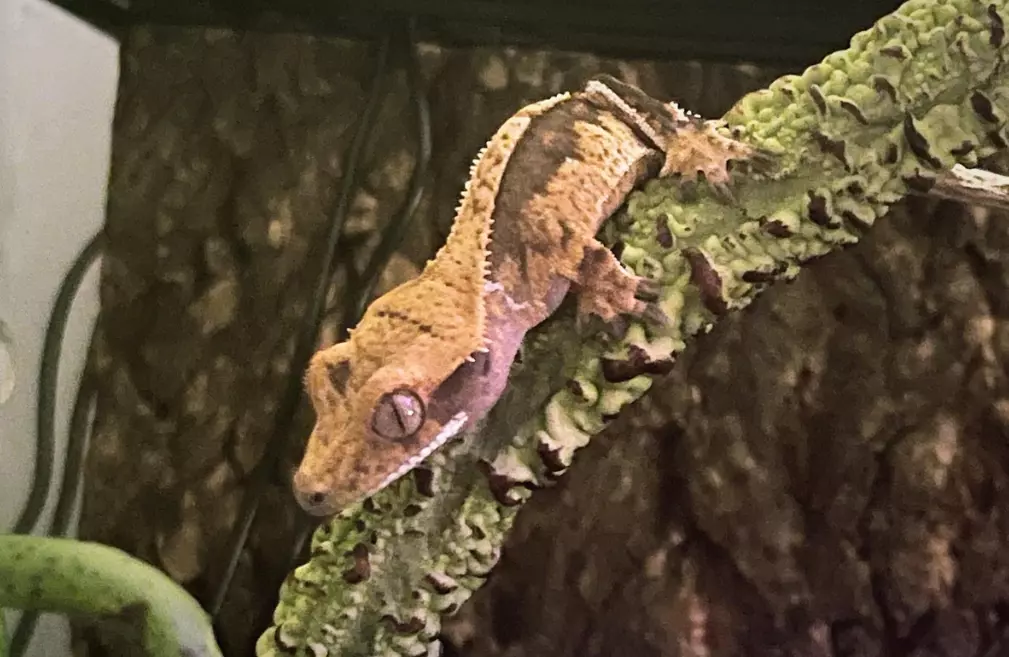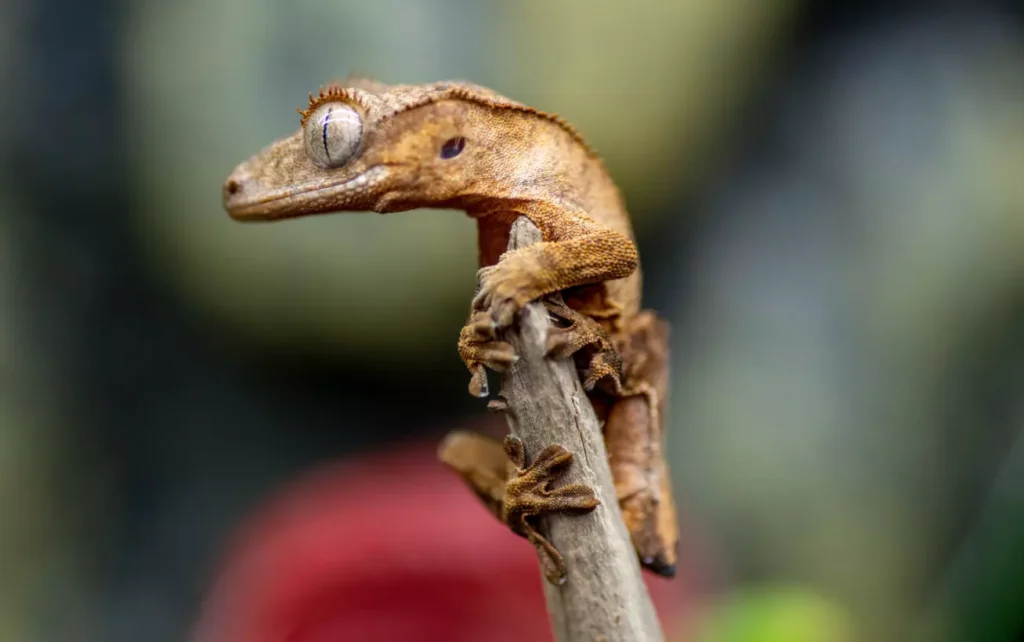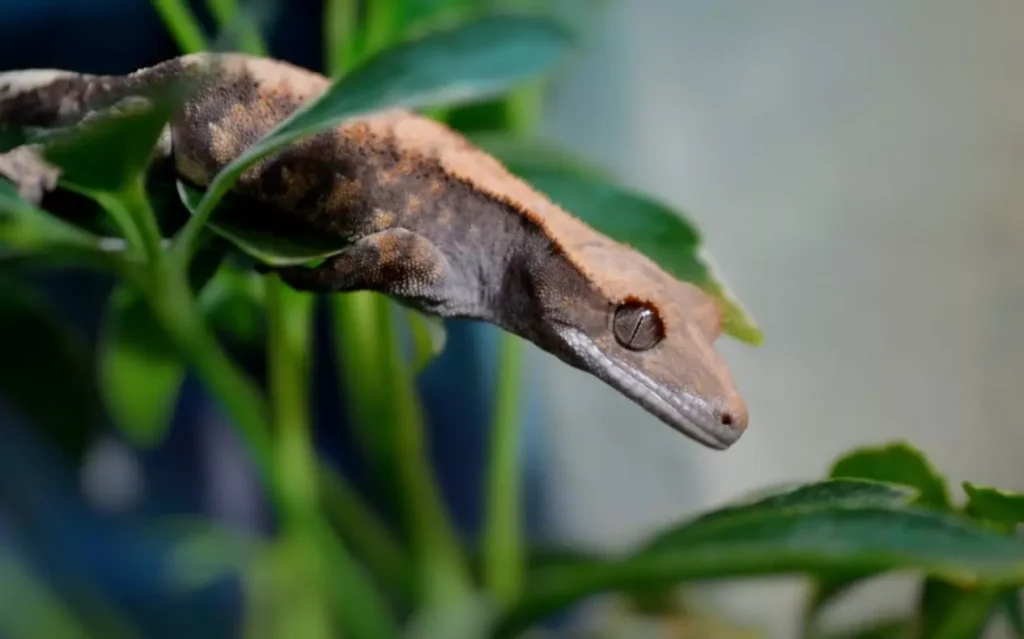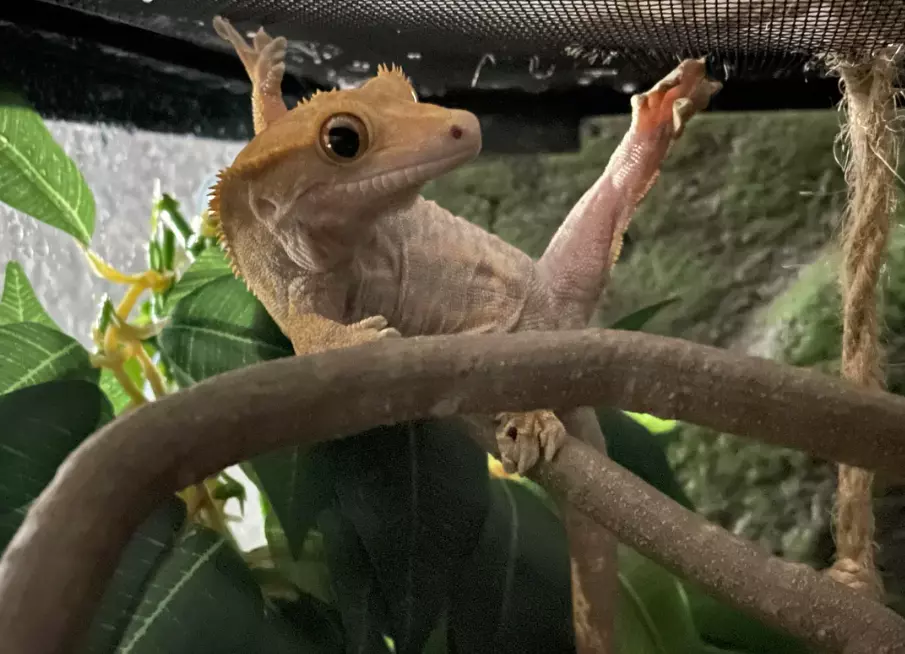Crested geckos are a species of lizard that belong to the family Diplodactylidae.
They are native to New Caledonia, a group of islands in the South Pacific Ocean, and named after the crest of skin that runs from their eyes to their tail.
But the real question is how endangered are these amazing animals in the wild?
And how are they doing in captivity, where they are widely bred and kept as pets?
Current Situation of Crested Geckos in the Wild
Crested geckos were once believed to be extinct but were rediscovered in 1994 by a group of reptile experts.
Right now, they are classified as “vulnerable” by the International Union for Conservation of Nature (IUCN). This means that they are at a high risk of disappearing from their natural habitat in the near future.
Their main threats are habitat loss, invasive species, and climate change.
1) Loss of their Homes and Break-up of Habitats

Crested geckos live in humid forests.
They spend their days hiding in tree hollows, under bark, or in the foliage and come out at night to eat insects, fruit, and nectar.
But their homes have been seriously reduced and split up by human actions like cutting down trees, mining, farming, building cities, and constructing roads.
Because of this, they can’t find the right places to live or the food they need.
It’s also causing them to be more vulnerable to predators and diseases.
2) Invasive Species and Being Hunted

Crested geckos don’t have many natural enemies in their home areas.
A few examples are birds, snakes, and other lizards.
However, they are facing danger from animals brought by people, like rats, cats, dogs, pigs, fire ants, and wasps.
These creatures either hunt the geckos or compete with them for food and space. Fire ants, in particular, are a big problem because their stings can kill crested geckos.
3) Changing Weather and Natural Disasters

They are used to living in tropical places with high temperatures and humidity.
But climate change is expected to change their environment. There will be more droughts, floods, storms, fires, and heatwaves.
All these events can make it hard for crested geckos to survive, have babies, and move around.
For example, droughts can mean less food and water for them. Floods can wash away their hiding spots and eggs. Storms can hurt the trees and plants they depend on.
And fires can destroy their homes, and heatwaves can lead to dehydration and heat stress.
How Are People Protecting Crested Geckos in the Wild?
In one place called New Caledonia, it’s against the law to catch, harm, sell, or send crested geckos somewhere else.
They’re put under special rules to keep them safe in the Code de l’Environnement de la Province Sud (Environmental Code of the South Province).
There are also worldwide rules through the Convention on International Trade in Endangered Species of Wild Fauna and Flora (CITES) that control how crested geckos can be bought and sold.
They’re in a category called “Appendix II,” which means you need permission to take them out of the country or bring them in.
F.A.Q.s
Q: What are the primary threats to Crested Geckos’ survival?
Habitat loss and degradation due to deforestation and urban development are significant threats.
Additionally, illegal collection for the pet trade can harm their wild populations.
Q: Are Crested Geckos bred in captivity less at risk than wild populations?
Yes, captive-bred Crested Geckos are generally less at risk.
They are not subject to the same habitat threats and collecting pressures as wild populations, making them a more stable option for the pet trade.
Q: How can we help conserve crested geckos in the wild?
We can help conserve crested geckos in the wild by supporting conservation efforts, such as habitat restoration, population monitoring, and education.
Habitat restoration can involve planting native trees and plants, removing invasive species, and creating artificial shelters for crested geckos.
Population monitoring can involve conducting surveys and research on crested gecko distribution, abundance, genetics, and health.
Education can involve raising awareness and promoting responsible pet ownership of crested geckos.

